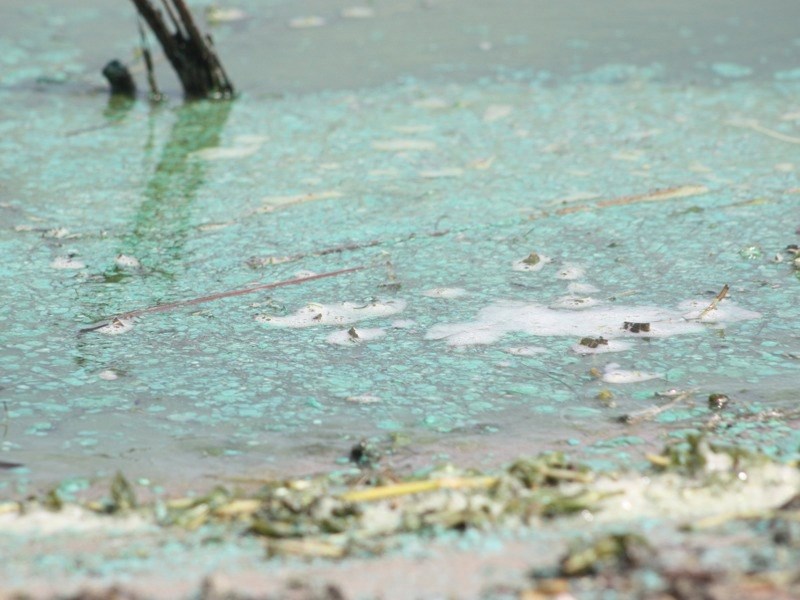As inevitable each summer as mosquitos and dandelions, a blue-green algae advisory has been issued for Baptiste Lake.
Also known as cyanobacteria, blue-green algae often becomes visible in the water when weather conditions are calm. Appearing like scum, grass clippings, fuzz or globs on the surface of water, cyanobacteria can be blue-green, greenish-brown, brown and/or pinkish-red, and often smells musty or grassy.
Baptiste is one of several lakes in Alberta for which a blue-green algae advisory is issued almost annually.
“There is a monitoring program in Alberta, looking at lakes that are used primarily for recreational purposes,” said Dr. Gerhard Benade, Alberta Health Services medical officer for health for northern Alberta. “We check approximately weekly (and) we also respond to public reports.”
“It’s not picking on any particular lake.”
It just so happens, he stated, that Baptiste Lake is susceptible to the annual blue-green algae blooms.
“One way to look at it is in terms of risk factors,” he said. “When these risk factors exist, the odds are high.”
Some of the risk factors include shallow water and an inflow of nutrients from lakeshore development, agricultural operations and other sources.
“Once the risk factors are in place, it might be a seasonal occurrence,” Benade said. “That’s just the way it is.”
People who come in contact with visible blue-green algae, or who ingest water containing it, may experience skin irritation or rash, sore throat, sore red eyes, swollen lips, fever, nausea, vomiting and/or diarrhea.
“I’d say the symptoms would depend on the exposure, dose, the nature of the exposure, the volume and duration,” Benade said.
He said someone who only dips their toes in contaminated water may only experience a slight rash, while those swim in or accidentally swallow the contaminated water are more likely to experience more severe symptoms.
Symptoms usually appear within one to three hours and resolve in one to two days and are often more pronounced in children.
Those living near Baptiste Lake, as well as visitors, are advised to avoid all contact with blue-green algae. Don’t swim or wade in any areas where blue-green algae is visible or allow your pets near the water.
“Deaths are not unheard of with pets and livestock consuming contaminated water,” Benade warned.
If contact with contaminated water occurs, wash with tap water as soon as possible.
Avoid consuming whole fish or fish trimmings from lakes under a blue-green algae advisory, as fish may store toxins in their livers. However, fish fillets can be safely consumed.
Never drink or cook with untreated water directly from any lake at any time. Boiling the lake water will not remove the toxins produced by blue-green algae.
Areas of Baptiste Lake where the blue-green algae bloom is not visible can still be used for recreational purposes, even while the advisory is in place. However, weather and wind conditions can cause algae blooms to move from one location in the lake to another.
“Common sense prevails,” Benade said. “People know what clear water looks like. If the water looks clear, then it’s fine.”



